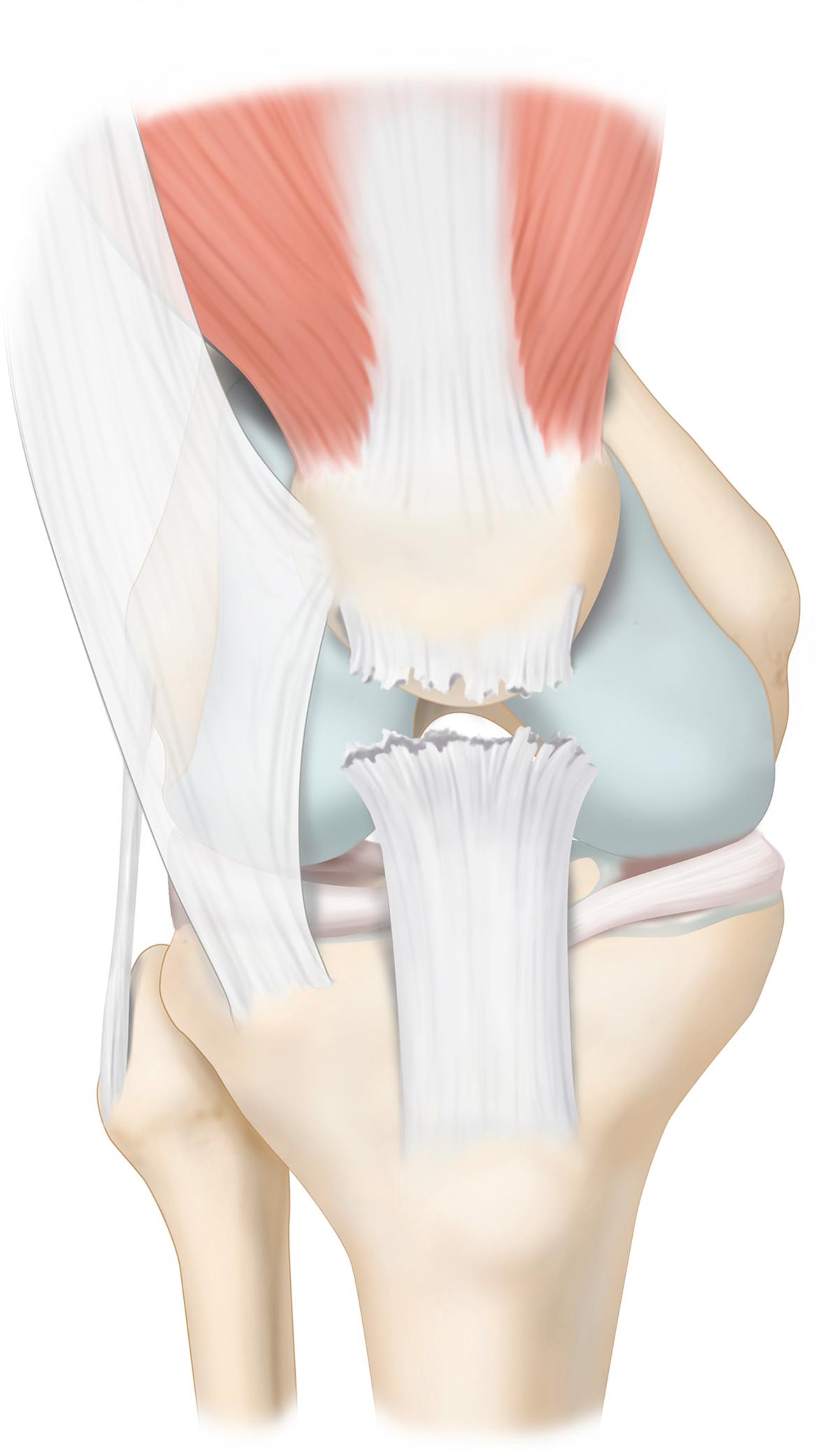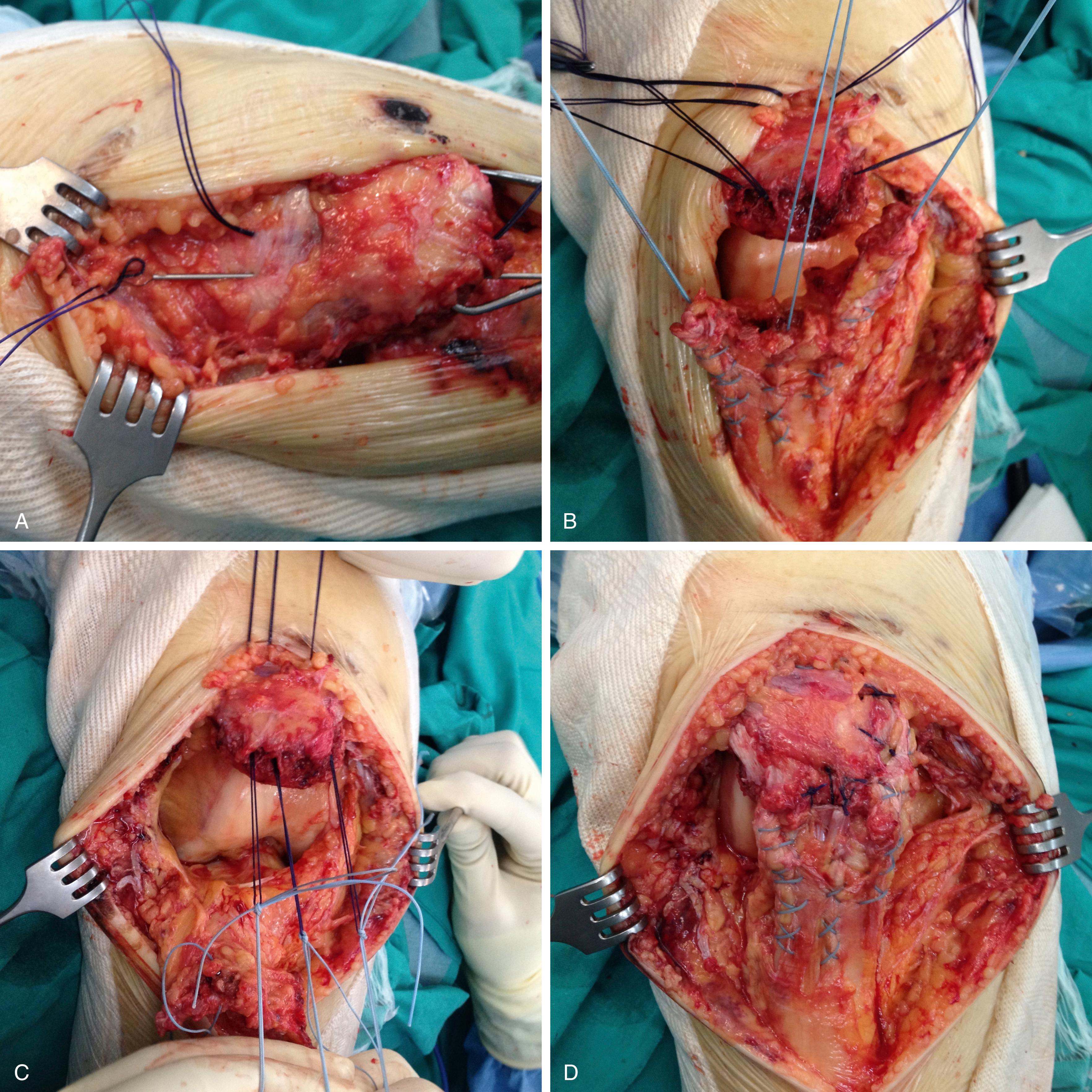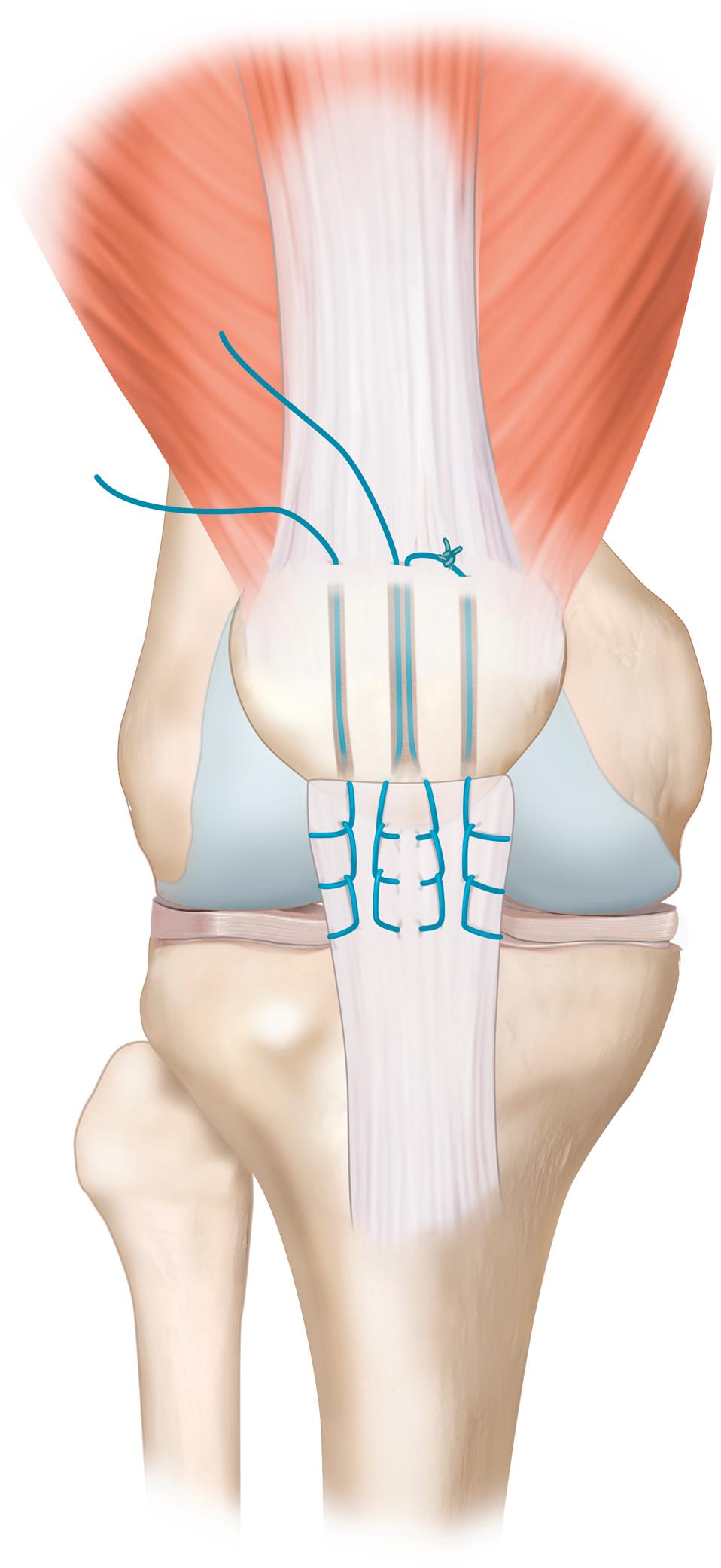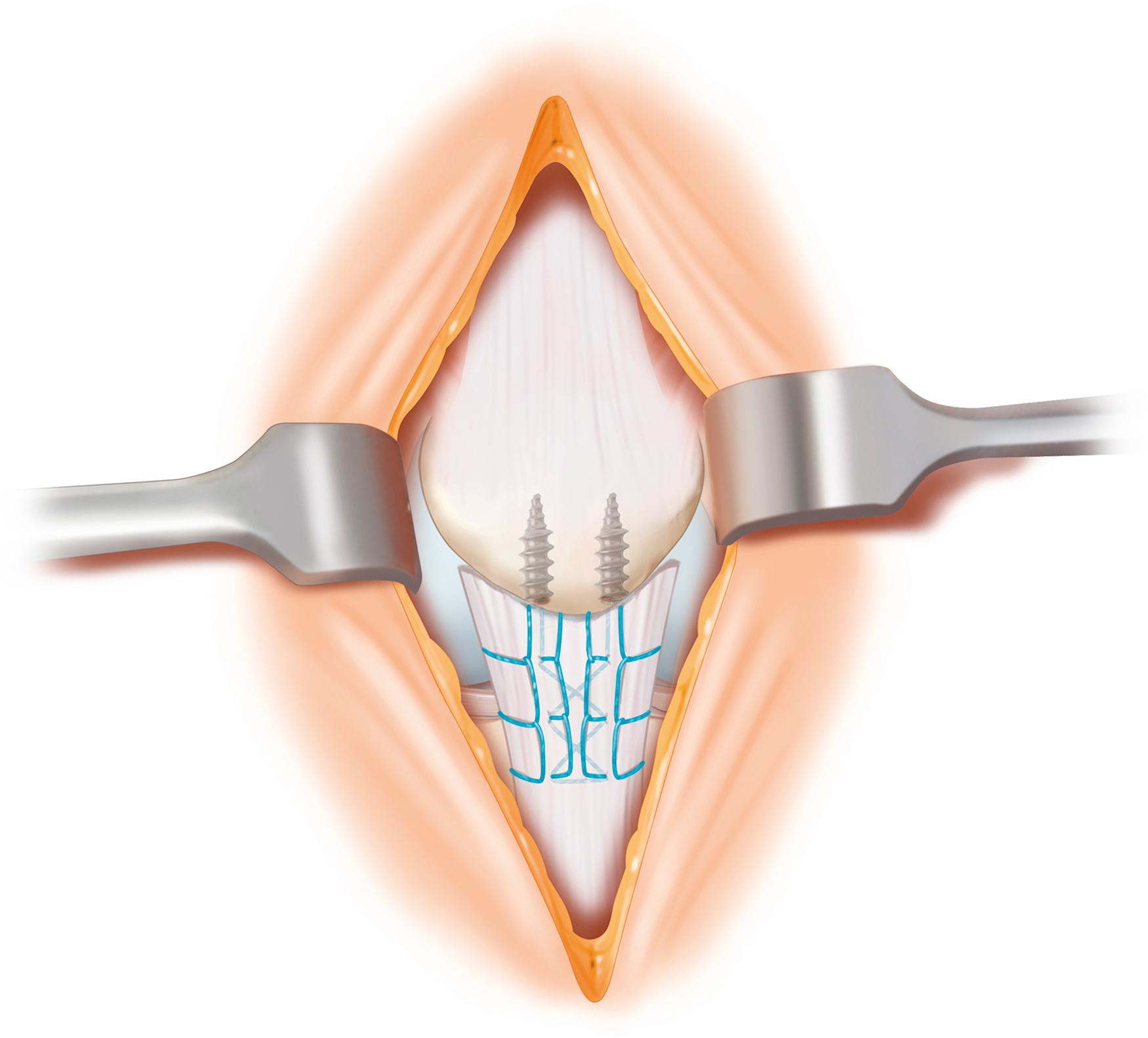Physical Address
304 North Cardinal St.
Dorchester Center, MA 02124
The patellar tendon is part of the extensor mechanism of the knee that includes the quadriceps muscle, quadriceps tendon, patella, patellar tendon and tibial tubercle (TT). The patella is considered the largest sesamoid bone of the body. For this reason, the patellar tendon may be considered a ligament because both its origin and insertion are on bone tissue (patella and TT). Its mean length is 50 mm, and it has a mean width of 30 mm. The distal insertion is slightly narrower than that at the patellar attachment.
The extensor mechanism can be injured in different locations. A fracture of the patella is the most common location. It is followed by quadriceps tendon ruptures and finally patellar tendon tears. Patellar tendon ruptures show a peak at around age 40 and represent around 0.6% of tendinous injuries in the general population. Although patellar fractures are more common in women, patellar and quadriceps tendon ruptures are more common in men. Hormonal changes during the menstrual cycle or greater laxity might help protect women from these injuries.
Most ruptures are reportedly related to chronic lesions of the tendon. Patellar tendinosis leads to a weaker tendon, which has a greater risk of rupture. There are different conditions that predispose to patellar tendon ruptures, such as repetitive local steroid injections and metabolic diseases (systemic lupus erythematosus, rheumatoid arthritis, diabetes mellitus, renal insufficiency or other connective tissue diseases) that produce a microscopic alteration of the blood supply and subsequently a degeneration of the tendon. The aetiology of chronic tendinosis is often unclear, and it has been attributed to repeated tendon microtrauma, which is characteristic of jumper’s knee. This is often observed in different sports like basketball, volleyball or running.
Most patellar fractures are due to a direct trauma to the knee. However, patellar or quadriceps tendon ruptures are typically produced by an indirect mechanism. They occur as a result of eccentric contraction of the quadriceps muscle against a strong apposition with the knee partially flexed. When the knee is flexed more than 50 to 60 degrees, the patellar tendon supports a great amount of force. It is for this reason that most patellar tendon ruptures occur with the knee flexed. Different activities, like landing from a jump, stopping for a change of direction or running while climbing stairs are considered to be at-risk activities for rupturing the tendon in predisposed individuals.
Patients may describe an audible ‘pop’ or a sensation of their knee giving way during a movement with a sudden contraction of the quadriceps muscle with the knee in a flexed position. These patients have a palpable defect below the patella. They also present with an acute onset of pain and swelling on the anterior part of the knee after the trauma. A large ecchymosis and hemarthrosis are common around this area.
These patients are usually not able to maintain the leg in extension because of lack of continuity of the extensor mechanism. Sometimes patients can maintain active extension if the retinaculum is intact, but there is an evident extension lag. When the affected area is explored, a gap in the infrapatellar fat might be present.
Radiographic evaluation that includes two projections (anteroposterior and lateral view of both knees) should be performed. A proximally displaced patella, compared with the contralateral knee, can be visualised in the lateral view with a patellar tendon rupture. The Catton-Deschamps, Insall-Salvati or Blackburne-Peel indexes can be used to compare the patellar height with the contralateral knee. It is also important to rule out bone avulsions of the inferior pole of the patella or an avulsion of the TT in the radiological study.
Ultrasonography (US) can better confirm the diagnosis. With US it is possible to localise the exact location of the rupture. However, the use of magnetic resonance imaging (MRI) allows for a more precise diagnosis of the tear, including the location of the tendon rupture, and also to distinguish between partial and complete injuries as well as assessing the integrity of the retinaculum. In addition, MRI allows for diagnosing concomitant intraarticular injuries. In conclusion, MRI is the preferable imaging study to completely examine the knee after extensor mechanism injuries.
Nonsurgical treatment is only followed in partial tears of the patellar tendon without an extension lag and when the patient can keep the leg straight passively. The level of activity is also important in determining the best treatment alternative in partial tears. Although this can be well tolerated in less active patients, surgical treatment is preferable in patients involved in demanding sport activities or with a higher functional level. Patients with medical comorbidities contraindicating surgery can also be considered for conservative management. In these cases the leg should be maintained in full extension with progressive weightbearing. For these partial tears, progressive range of motion (ROM) can be initiated around the third to sixth week, depending on the amount of tendon torn.
Surgical repair should be indicated for all complete tears or partial tears with functional dysfunction in active patients. The type of surgery will depend mostly on the height of the patellar tendon disruption.
Detachments of the patellar tendon at the inferior pole of the patella ( Fig. 33.1 ) should be reinserted into its native attachment. For this the most common technique involves drilling three vertically oriented 2- to 3-mm holes in the patella. Posteriorly, two or three Krakow sutures with nonabsorbable braided polyblend sutures should be performed as indicated in Fig. 33.2 . Finally, the suture ends (four to six) should exit the proximal border of the tendon. The sutures are then introduced through the drilled patellar tunnels. For this, any type of suture shuttling device, such as a Hewson passer or Kirschner wire (K-wire) with an eyelet, can be used. Then the sutures’ ends are tied between them with sutures exiting from other patellar tunnels as a bridge ( Fig. 33.3 ) at 30 degrees or more of knee flexion.



It is crucial to check the patellar height before the sutures are tied down. For this an intraoperative fluoroscopic evaluation comparing it with the contralateral knee is recommended. In case it is not possible to evaluate the contralateral knee with it at 45 degrees of flexion, the inferior pole of the patella might be right above the intercondylar notch.
The use of a backup protection technique to protect the tendon repair is also recommended. This allows the patient to initiate the ROM immediately after the surgery. Different techniques have been described. These are classically fixed between 60 and 90 degrees of knee flexion. Classically a horizontal hole is reamed across the TT. An 18-gauge wire is passed through this hole and posteriorly passed through the middle of the quadriceps tendon proximal to the patella. It is important not to iatrogenically create patella baja with this surgical step. This backup protection can also be done with any type of nonabsorbable braided polyblend suture or with a 5-mm Mersilene tape (or other type of synthetic tape) following the same technique.
Another option for proximal patellar tendon rupture repair is the use of anchors. Two to three anchors fixed in the distal pole of the patella can be placed with four to six sutures that are used to create a Krakow suture technique (or similar) to finally approximate the proximal aspect of the tendon to its native insertion ( Fig. 33.4 ).

Become a Clinical Tree membership for Full access and enjoy Unlimited articles
If you are a member. Log in here